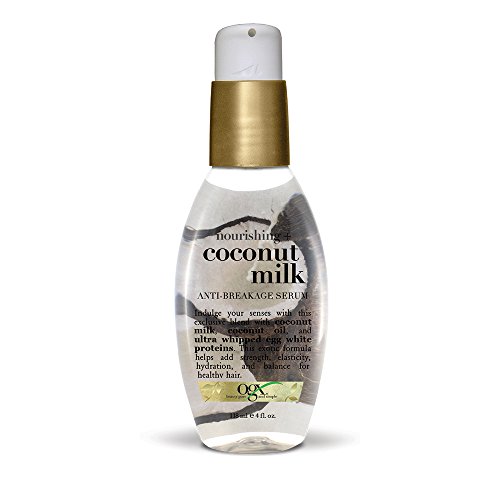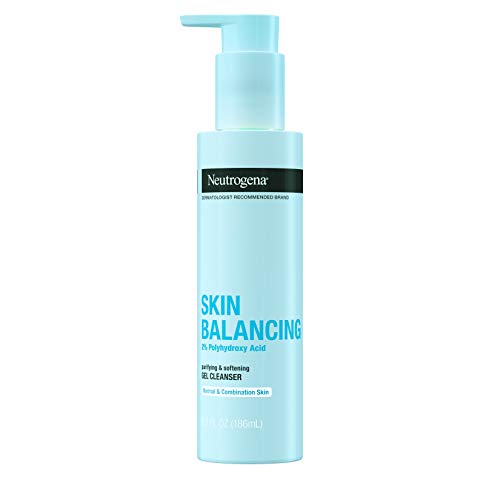
How often should I apply hydrating hair oil?
The step-by-step guide will help you determine how often to apply hydrating hair oil for healthy and hydrated hair.
Top-selling hair oils for ultimate hydration



Understand your hair type
- Observe: Take a close look at your hair to determine its type. Is it oily, dry, or normal? Look for any visible signs such as greasy roots, flaky scalp, or excess frizz.
- Touch: Run your fingers through your hair and feel the texture. Is it smooth and silky, rough and coarse, or somewhere in between?
- Consider: Take into account any other factors that may affect your hair type, such as chemical treatments, heat styling, or environmental factors.
- Analyze: Based on your observations, determine whether your hair is oily, dry, or falls somewhere in the normal range.
- Decide: Knowing your hair type will help you determine how often you should apply hydrating hair oil. Oily hair may require less frequent application, while dry hair might benefit from more regular use.
- Adjust: Remember that everyone’s hair is unique, so it may take some trial and error to find the perfect balance of oil application for your specific hair type.



Assess your hair's condition
Evaluate the current condition of your hair by examining its texture, shine, and overall appearance. If your hair feels excessively dry or damaged, it is advisable to increase the frequency of applying hydrating hair oil. Regularly assess your hair’s condition to determine the appropriate amount of hydrating treatment needed for optimal results.
Start with a small amount
- Step 1: Start by pouring a small amount of hydrating hair oil onto your palm. A dime-sized amount is usually sufficient for short to medium hair, while a quarter-sized amount may be needed for longer hair.
- Step 2: Rub your palms together to warm up the oil slightly and ensure an even distribution.
- Step 3: Gently run your fingers through your hair, starting from the roots and working your way down to the ends. Be careful not to use too much pressure or tug on your hair too forcefully.
- Step 4: Once you have distributed the oil evenly through your hair, use your fingertips to massage your scalp in circular motions. This will help stimulate blood flow and promote hair growth.
- Step 5: If you feel you need more oil, repeat steps 1-4 with another small amount. Remember, it’s better to add a little at a time than to use too much and weigh down your hair.
- Step 6: Style your hair as desired, knowing that a small amount of hydrating hair oil will give you a natural shine and help control frizz throughout the day.
Example: For instance, if you have shoulder-length hair, start with a dime-sized amount of hydrating hair oil. Rub your palms together, then gently run your fingers through your hair, ensuring the oil is evenly distributed. Massage your scalp for a few minutes, and if needed, add a little more oil. Finally, style your hair as desired, enjoying the benefits of a small amount of hydrating hair oil.



Monitor the effects
- Observe how your hair reacts: Pay close attention to how your hair responds to the hydrating hair oil. Take note of any changes in texture, shine, or moisture levels.
- Check for changes in texture: Feel your hair regularly to determine if there are any noticeable differences in texture. See if it becomes smoother, softer, or more manageable.
- Look for increased shine: Examine your hair under different lighting conditions to see if it appears shinier than before. Note any improvements in its overall luster.
- Evaluate moisture levels: Assess whether your hair feels more hydrated and moisturized. Notice if it retains moisture for longer periods and if it feels less dry or brittle.
- Take before and after pictures: Capture images of your hair before using the hydrating oil and after using it for a while. Compare the visual changes to better understand the effects.
- Keep a journal: Maintain a hair care journal and record your observations regularly. Document any improvements or concerns, and note the frequency of use and the amount of oil applied.
- Adjust usage if needed: If you notice any adverse effects or if the desired results are not achieved, consider adjusting the amount of hair oil used or the frequency of application.
- Consult a professional if necessary: If you have any doubts or concerns about the effects of the hair oil, seek advice from a professional hair stylist or dermatologist. They can provide personalized guidance based on your hair type and condition.
Adjust frequency based on hair needs
To determine the appropriate frequency of applying hydrating hair oil, consider your hair type and condition. Experiment with different intervals to find the optimal balance for your hair.
- Fine or oily hair: Apply hydrating hair oil once or twice a week. Start with once a week and assess how your hair feels. If it still feels oily or weighed down, reduce the frequency to once every two weeks. If your hair feels dry or frizzy, increase the frequency to twice a week.Example: If you have fine or oily hair, start by applying hydrating hair oil every Sunday. Monitor how your hair looks and feels throughout the week. If it starts to feel greasy by Wednesday, reduce the frequency to every other Sunday. On the other hand, if your hair becomes dry or frizzy by Thursday, increase the frequency to every Sunday and Wednesday.
- Normal or medium hair: Apply hydrating hair oil two to three times a week. Begin with two times a week and observe how your hair responds. If it feels too heavy or greasy, decrease the frequency to once a week. If it appears dry or lacks shine, increase the frequency to three times a week.Example: For those with normal or medium hair, start by applying hydrating hair oil on Mondays and Thursdays. Assess your hair’s condition after each application. If it feels overly oily or weighed down by Thursday, switch to applying it only on Mondays. Conversely, if your hair feels dry or lacks lustre by Wednesday, add an additional application on Saturdays.
- Thick or dry hair: Apply hydrating hair oil three to four times a week. Begin with three times a week and evaluate how your hair behaves. If it feels too greasy or weighed down, reduce the frequency to twice a week. If it remains dry or lacks moisture, increase the frequency to four times a week.Example: If you have thick or dry hair, start by applying hydrating hair oil on Tuesdays, Thursdays, and Saturdays. Monitor your hair’s condition after each application. If it becomes excessively oily or heavy by Saturday, reduce the frequency to Tuesdays and Saturdays. Conversely, if your hair remains dry or lacks hydration by Thursday, add an extra application on Sundays.
Remember, these examples are only guidelines. Adjust the frequency of applying hydrating hair oil based on your hair’s unique needs and preferences.



Consider external factors
When determining how often to apply hydrating hair oil, it is crucial to take into account external factors that can influence your hair’s hydration needs. Factors such as weather, humidity levels, and styling routines play a significant role in determining the frequency of oil application.
1. Weather: Consider the weather conditions in your area as they can impact your hair’s moisture levels. In dry or arid climates, the hair tends to become more dehydrated, necessitating more frequent application of hydrating hair oil. Conversely, in humid environments, where the air is already saturated with moisture, less frequent application may be needed.
2. Humidity: Humidity levels can greatly affect hair hydration. In high humidity, hair tends to absorb moisture from the air, making it appear frizzy and prone to damage. In such cases, applying hydrating hair oil more often can help combat frizz and maintain moisture balance. However, in low humidity conditions, where the air lacks moisture, more frequent application is necessary to prevent dryness and keep hair hydrated.
3. Styling routines: The styling products and tools you use also play a role in determining how often you should apply hydrating hair oil. Heat styling tools such as flat irons and curling wands can strip the hair of its natural moisture, requiring more frequent oil application to replenish hydration. Similarly, using products like hairspray or styling gels that contain alcohol can lead to dryness, necessitating regular application of hydrating oil to restore moisture.
By considering external factors such as weather, humidity, and styling routines, you can adjust the frequency of applying hydrating hair oil to ensure your hair remains well-hydrated, healthy, and free from damage. Stay aware of your hair’s needs and adapt your oil application routine accordingly for optimal results.
Avoid excessive use
- Do not overuse hydrating hair oil. Overusing hydrating hair oil can result in greasy or weighed-down hair. Apply only a small amount of oil to avoid these issues.
- Use it sparingly. Use the hair oil in moderation to prevent your hair from becoming too oily or heavy. Remember, a little goes a long way.
- Focus on the ends of your hair. Apply the oil mainly to the ends of your hair, where moisture is needed the most. This will help nourish and hydrate your hair without making it greasy.
By following these simple guidelines and using the hydrating hair oil judiciously, you can maintain healthy, moisturized hair without any unwanted side effects.
Seek professional advice
Consult a hairstylist or trichologist to get personalized recommendations on how often to apply hydrating hair oil. They will be able to assess your hair type and condition, and provide specific instructions tailored to your needs. Don’t hesitate to seek professional advice for the best results.
Maintain a consistent routine
To maintain the health and hydration of your hair, it is crucial to establish a consistent routine for applying hydrating hair oil. After determining the ideal frequency, follow these steps to ensure maximum benefits:
- Choose the right time: Find a convenient time in your daily schedule to apply the oil. It could be before bedtime, in the morning, or any time that works best for you.
- Prepare your hair: Before applying the oil, make sure your hair is clean and dry. If necessary, use a gentle shampoo and conditioner to remove any product buildup or dirt.
- Dispense the oil: Depending on your hair length and thickness, dispense an adequate amount of hydrating hair oil into your palm. Start with a small amount and add more if needed.
- Apply the oil: Rub your palms together to distribute the oil evenly. Gently massage it into your scalp using your fingertips, applying light pressure in a circular motion. Continue to work the oil down the length of your hair, avoiding the roots if you have oily hair.
- Comb or brush your hair: Use a wide-toothed comb or a brush with soft bristles to distribute the oil further through your hair. This will ensure that each strand is coated with the hydrating goodness.
- Leave it in or rinse: Depending on the instructions on the product, you can choose to leave the oil in your hair for additional nourishment or rinse it out after a certain period. Follow the recommended time mentioned on the packaging for the best results.
- Stick to the routine: Consistency is key when it comes to maintaining the health and hydration of your hair. Make sure to follow this routine regularly, adjusting the frequency as needed based on your hair’s condition and needs.
By establishing a consistent routine for applying hydrating hair oil, you’ll give your hair the attention it deserves, keeping it healthy, nourished, and hydrated.
The Final Verdict
To conclude, there is no one-size-fits-all answer to how often you should apply hydrating hair oil. It depends on your hair type, condition, and personal preferences. It’s important to experiment, monitor the effects, and find a balance that works for you. Consulting with a professional and maintaining a consistent routine will contribute to achieving and maintaining healthy, hydrated hair.

Hey, I’m Ava Wilson—a skincare enthusiast and a certified esthetician. I’m dedicated to sharing my knowledge and empowering others to achieve healthy, glowing skin through simple, effective routines and natural remedies. Join me on this exciting skincare journey, and let’s unlock your skin’s potential for a confident, beautiful you.





